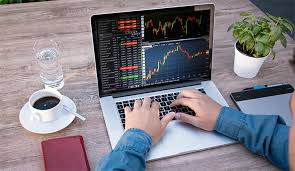
Forex trading, or foreign exchange trading, is a decentralized global market where currencies are traded. With a daily trading volume exceeding $6 trillion, it is considered the largest financial market in the world. New traders often find themselves overwhelmed by the sheer volume of information available, which is why understanding the basics is crucial. This guide aims to provide essential knowledge, tips, and resources, including forex trading basics https://forex-level.com/, to help beginners navigate the world of forex trading successfully.
Understanding the Forex Market
The forex market operates 24 hours a day during weekdays, allowing traders from all over the world to engage in currency trading at any time. Unlike stock markets, forex does not have a centralized exchange; instead, it is conducted over-the-counter (OTC). Traders use brokerage services to place trades, which connect them to other market participants.
The main players in the forex market include:
1. **Central Banks:** They influence currency values through monetary policy and interventions.
2. **Financial Institutions:** Banks and hedge funds engage in forex trading for speculation and hedging.
3. **Corporations:** Businesses use forex to manage international transactions and exposure to currency fluctuations.
4. **Retail Traders:** Individual traders participate in forex trading, often through online platforms, seeking profit from exchange rate changes.
How Forex Trading Works
Forex trading involves buying one currency while simultaneously selling another. Currency pairs are categorized into three types:
1. **Major Pairs:** These include the most traded currencies, such as EUR/USD and USD/JPY.
2. **Minor Pairs:** These are less traded pairs that do not include the USD; for example, GBP/JPY.
3. **Exotic Pairs:** These involve a major currency and a currency from a smaller or emerging economy, such as USD/THB.
When trading, prices are quoted in pips, the smallest price change in currency pairs. Understanding how to read these quotes is essential for successful trades.

Basic Terminology and Concepts
Getting familiar with basic forex terminology is crucial for new traders. Here are some key terms:
– **Pip:** The smallest price move that a given exchange rate can make based on market convention.
– **Lot:** A standardized quantity of a financial instrument. In forex, one standard lot equals 100,000 units of the base currency.
– **Leverage:** A tool that allows traders to control larger positions with a smaller amount of capital. While this can amplify profits, it also increases potential losses.
– **Margin:** The amount of capital required to open a leveraged position. Margin accounts allow traders to control larger trades than their account balance would otherwise allow.
Developing a Trading Strategy
A well-defined trading strategy is vital for success in forex trading. A strategy should include:
1. **Goals:** Determine what you want to achieve (e.g., financial independence, supplemental income).
2. **Risk Management:** Establish how much capital you are willing to risk on each trade and set stop-loss orders to minimize losses.
3. **Market Analysis:** Utilize technical and fundamental analysis to make informed trading decisions.
**Technical Analysis:** This approach involves studying past market data and price patterns to predict future movements. Traders use charts, indicators, and various statistical tools to analyze trends.
**Fundamental Analysis:** This method looks at economic indicators, news events, and geopolitical developments that may influence currency values. Understanding macroeconomic fundamentals—such as interest rates, inflation, and employment data—is crucial in this analysis.
Choosing a Trading Platform and Broker
Selecting the right forex broker and trading platform is critical for your trading journey. Consider the following factors when choosing a broker:
1. **Regulation:** Ensure your broker is regulated by a reputable authority as this provides a level of protection for your funds.
2. **Trading Fees:** Look for competitive spreads and low transaction costs. Some brokers charge commissions, while others earn through the spread between buy and sell prices.
3. **Platform:** Choose a trading platform that is user-friendly and suits your trading style. Most brokers offer demo accounts, allowing you to test their platforms risk-free.
4. **Customer Support:** Reliable customer service is essential, especially when you encounter issues or have questions.
Tips for Success in Forex Trading
1. **Start with a Demo Account:** Most brokers offer demo accounts. Use them to practice your skills and understand how the market works without risking real money.
2. **Stay Informed:** Keep up with global economic news and events that might impact currency markets. Subscribing to financial news services can keep you informed.
3. **Focus on One or Two Pairs:** Initially, concentrate on a couple of currency pairs to develop a deeper understanding before diversifying your portfolio.
4. **Maintain Discipline:** Stick to your trading plan and avoid emotional trading. Consistency is key to long-term success in forex.
5. **Review and Adapt:** Regularly assess your trading performance, strategies, and market conditions. Be willing to adapt your approach based on what’s working and what’s not.
Conclusion
Forex trading can be a rewarding venture if approached with the right knowledge and mindset. By understanding the basics of the market, developing a solid trading strategy, and practicing consistently, you can enhance your chances of success. Remember, though, that all forms of trading involve risk, and it is essential to continue learning and adapting to market conditions. Embrace the journey, and with time, effort, and education, you can become a proficient forex trader.
Be sure to explore resources like https://forex-level.com/ to further enhance your trading knowledge and skills.


